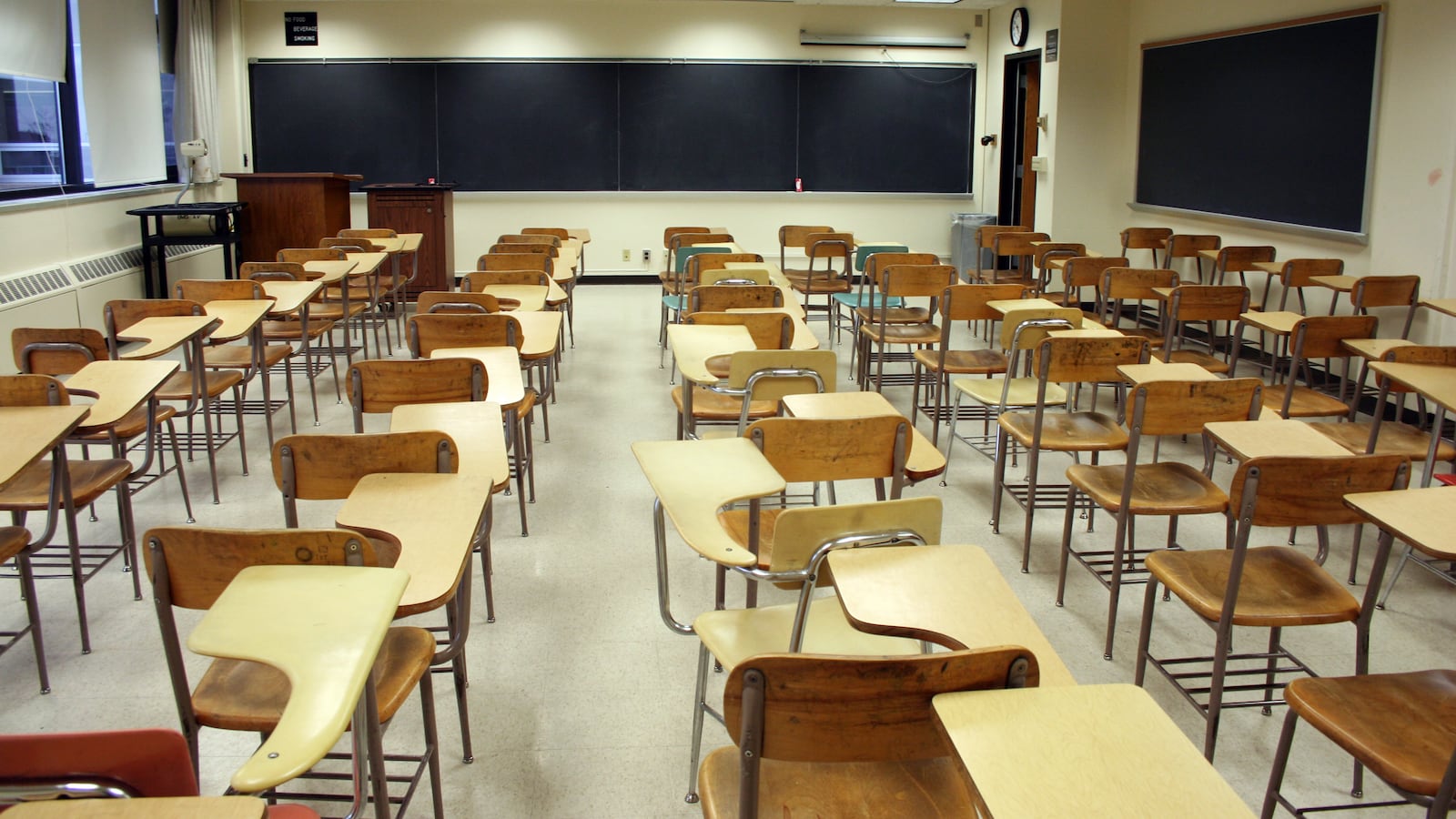With 1.5 million Michigan students stuck at home in an effort to slow the spread of the new coronavirus, digital technologies seem like an obvious way to keep students connected with their schools.
But less than a week into a historic public health crisis, student learning is largely falling to families as schools opt not to attempt to hold any classes online. Superintendents recognize that not all of their students have access to the internet and a computer at home, and worry that holding classes online could get them in trouble with state and federal authorities.
The result: In Michigan, students mostly aren’t being required to complete any work or to have regular contact with teachers. Many schools simply sent home printed homework packets and a list of links to online educational programs, according to a Chalkbeat review of COVID-19 related communications from three dozen of Michigan’s 842 school districts and charter schools.
There are exceptions around the state, as individual teachers find ways to connect with their students digitally and some districts find ways to bring their lessons online.
With more than half of U.S. students out of school, educators across the country are scrambling to limit the damage to students’ development. Even as districts rush to aid families who depend on schools for basic nutrition and social services, many districts are holding back from taking a systemwide leap into virtual instruction.
“I gave my students a take-home assignment, and offered to help them, but on our end that’s pretty much it,” said Kendon Smith, a science teacher at Columbia Central High School in Brooklyn, Michigan. “We aren’t really prepared to do remote learning at this point.”
Smith had hoped to continue meeting in small groups with his AP Chemistry students, who are studying for a crucial exam in just a few months, but he bagged that idea after Gov. Gretchen Whitmer shut down most public gathering places to limit the spread of COVID-19.
He has stayed in touch with his students electronically, but many don’t have internet access. When he mentioned to them that Comcast is offering free internet subscriptions to students, they replied that the company doesn’t cover their south-central patch of the state.
While a handful of districts say they’re able to reach every student with online lessons, that’s out of the question for poorer districts, from sparsely populated rural areas like Smith’s to the Detroit city district, the state’s largest.
That effort is complicated by guidance issued by state and federal officials which suggests that schools could risk being sued or losing funding if they provide online services that don’t reach all of their students, including those who lack internet access or who have special needs.
Kevin Upton, superintendent of Manchester Community Schools in central Michigan, said the message from state authorities has been straightforward:
It is “illegal to provide anything less than equitable access for all children in our district,” he wrote in an email, paraphrasing state guidance. “All of the children within our community do not have access to the internet at home. Therefore, any work completed during these times will be considered as ‘engagement’ activities’ and won’t be collected or graded.”
Robin Lake, director of the Center on Reinventing Public Education at the University of Washington, has urged state officials to adapt their requirements for the COVID-19 outbreak.
“I don’t think the all-or-nothing approach makes any sense,” she said.
State officials say they are working on new guidance for school districts related to COVID-19, said Bill Disessa, a spokesman for the Michigan Department. “These are complex issues in a rapidly changing environment in a state of 842 diverse school districts,” he said.
In any case, it’s clear that the COVID-19 outbreak, which is already taking an emotional toll on students, will also tax their academic development.
At least one district in Michigan says it has pulled off a full shift to online learning. In West Bloomfield, a wealthy suburb north of Detroit, the district of 4,500 students says students are completing the requirements of a full school day at home.
“We’re working right now to try to determine what the state will and will not recognize as a quote unquote school day of attendance,” said Superintendent Gerald Hill.
The district began working on a transition plan last week, modeling its efforts on the Northshore School District in Washington state, which was among the first in the nation to close. (The Northshore district has since paused its online learning program out of concern that it could fall afoul of state and federal law.)
West Bloomfield has a laptop available for every student, and enough wireless hotspots to loan to every student who lacks internet access at home.
Teachers send home books and lessons to fit the needs of each child, and they post daily lessons and videos.
As Michigan’s first week of school closures nears an end, West Bloomfield is an exception. Most districts in the state aren’t attempting to shift to online classes.
Holly Longo, a teacher in the Detroit Public Schools Community District, spent Wednesday calling the families of every student in her homeroom. They each received printed learning packets from the district, and they have access to online learning programs and a homework hotline. She helped parents troubleshoot issues logging on to those programs, but some said they didn’t own the technology they’d need to log on.
Longo’s more immediate concern, though, was the physical well-being of her students — many of their families depend on the school lunch program.
“As I was going through the list, I was thinking, I wonder how this one is doing,” she recalled. “It was a sad feeling to go through the list and think, I wonder if they were able to go pick up breakfast.”


